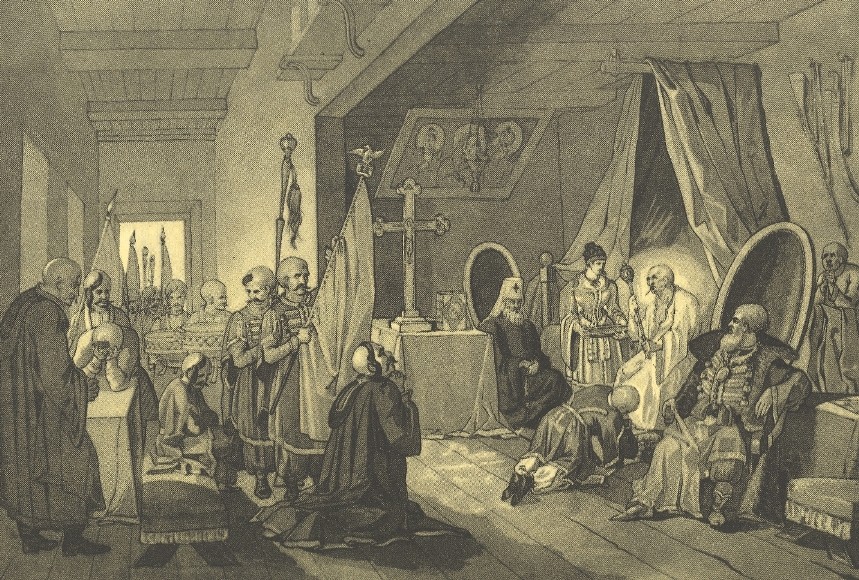
Based on the work of predecessors, the available source base, the purpose of the study is to analyze the situation in the Ukrainian state, which developed in 1657 and was connected with the intensifi cation of Ukrainian policy of Moscow and Warsaw, catalyzed by the death of Bohdan Khmelnytskyi and the unfolding of home political confrontation which resulted in the civil war of 1657—1663. Research methodology. Th e research presented in this article is carried out on the basis of the principles of historicism, objectivity, comprehensiveness and integrity. Th e methods used by the author (analysis and synthesis, historical-comparative, historical-typological, problem-chronological) allowed to perform the tasks and realize the purpose of the study. Th e scientifi c novelty is that for an attempt was made to analyze the events of 1657 as a time of formation of a complex knot of internal and external contradictions, which eventually led to prolonged civil strife, intensifi ed external intervention and ended in splitting the Ukrainian state into two hetmanates in 1663. Conclusions. 1657 was a year of trials and upheavals for the Ukrainian Cossack state. In fact, this year the Ukrainian Cossack state saw a protracted domestic political crisis and intensifi ed external infl uences on Ukraine from neighboring Muscovy and the Polish-Lithuanian Commonwealth. One of the main factors in the sharp aggravation of the situation in and around Ukraine was, fi rst, the collapse of hopes for the realization of national liberation tasks through a military-political alliance with Muscovy. Th e latter concluded a separate armistice agreement with the Polish-Lithuanian Commonwealth in the autumn of 1656, thus undermining the very purpose of the Ukrainian-Moscow agreement of 1654. As for the latter, Moscow increasingly demanded its revision to strengthen Moscow position in Ukraine. Secondly, in our opinion, most important was the death of the Great Ukrainian hetman Bohdan Khmelnytskyi, which catalyzed a number of negative processes within the state (exacerbation of social contradictions, struggle for power) and intensifi ed external infl uences (primarily from Moscow and the Polish-Lithuanian Commonwealth). Th is loss greatly aff ected the resilience of the Ukrainian political elite, its ability to solve growing internal and external problems. Perhaps the biggest problem was relations with Moscow. Th e latter, taking advantage of B. Khmelnytskyi death, put insane pressure on the Ukrainian authorities, in fact resorting to the means of “hybrid war”, which aimed to create conditions under which Chyhyryn will be forced to make radical con-cessions, which will eventually limit Ukrainian sovereignty and strengthening the position of the tsarist autocracy. Actually, such actions by Moscow largely provoked the civil war in Ukraine. At the same time, they encouraged the Ukrainian Hetmanate to reorient to an understanding with the Polish-Lithuanian Commonwealth, which resulted in the beginning of negotiations, which consequently resulted in the signing in 1658 of the Treaty of Hadiach.
Source: Hazin V. (2022). Tragic 1657: Ukrainian State in the Maelstrom of internal and external challenges. The research papers of Kamianets-Podilskyi National Ivan Ohiienko University: historical studies. 35: 162-178
Source web-site: https://drive.google.com/file/d/16-SKo7gShpmQ7yK2wqL0G4wibctVuVXl/view
Number of views: 1501